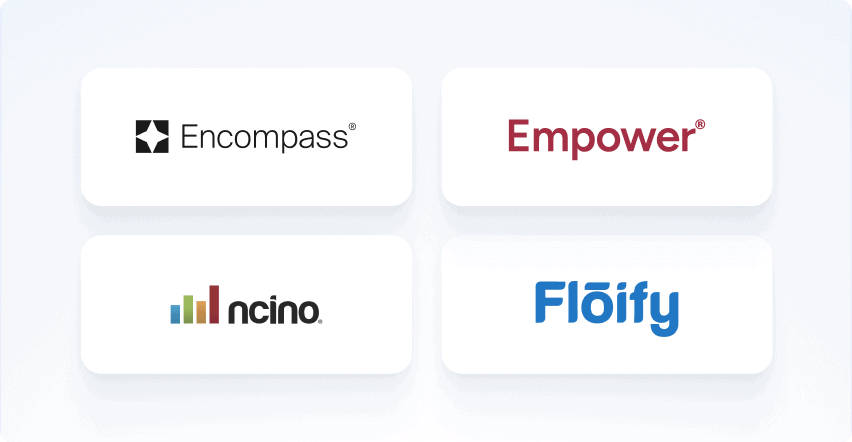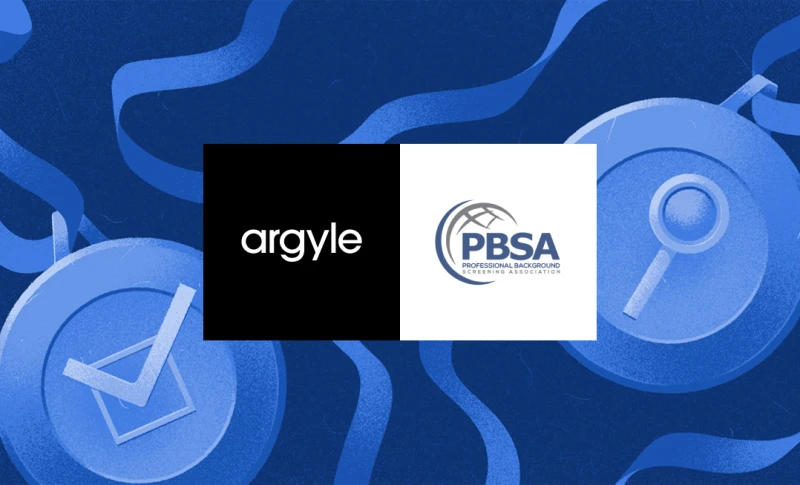Our recent article highlights how using APIs to streamline verification processes can improve the cost, accuracy, and efficiency of background checks.
Argyle’s general manager of strategic verticals, Justin Stolzenberg, recently published an article in the Journal of the Professional Background Screening Association (PBSA), detailing the pros and cons of using emerging technology for employment verifications. Ultimately, he argues that adopting tech-forward verification tools can automate key parts of the background-check process and save consumer reporting agencies (CRAs) and end users alike substantial time and resources.
You can review some of our key takeaways in the recap below.
Employment verification technology: the basics
Alternative employment verification solutions (like Argyle) allow companies to connect to an applicant’s payroll account and pull verified employment data in real-time directly from the source.
They do this by leveraging two innovative technological components:
APIs, or the infrastructure that works on the back-end to transmit data from an applicant’s payroll account to a third-party screening service’s system
SDKs, or the front-end interface where an applicant can enter their payroll account credentials and permission access to their employment data
Benefits of verification technology
There are several immediate business benefits to employing verification technology, the most notable of which include:
Greater efficiency: Technology can automate tasks like contacting applicants’ employers and manually processing data, reducing turnaround time from days or weeks to seconds.
Lower costs: Along with increasing productivity and reducing labor costs, technology offering real-time, ongoing connections eliminates the need to purchase VOE reports from data providers like The Work Number (TWN).
Better accuracy: Verification technology streams data directly from payroll providers. That means output is exceedingly accurate, leading to more reliable insights and the ability to comply with FCRA screening regulations.
Tighter privacy: Technological solutions enable screeners to access employment data without alerting an applicant’s current or past employers, allowing for greater confidentiality.
Challenges of verification technology
Ultimately, it’s up to CRAs, employers, and applicants to weigh the pros and cons of emerging employment verification technology and decide whether it’s right for them. Some of the challenges that these tools can present include:
Learning curves: New technology can present a bit of a hurdle when it comes to setup and training. Luckily, there are no-code options that can be easily up and running in under a day.
Job automation: Any boost in efficiency brings the possibility of workforce reduction—but it also brings stability to the high turnover rates that can occur during slow and busy periods.
Coverage gaps: Applicants may have changed jobs frequently and no longer have access to prior accounts, or their employers may not be in a provider’s network. For best results, CRAs can look for tech vendors with proven coverage or set up waterfalls that leverage multiple verification methods.
The bottom line
The background check industry is changing, and so are the employment verification tools screeners have at their disposal. To keep up with the latest trends and best practices—not to mention the competition—CRAs and end users need to at least be familiar with emerging technology, if not use it to drive their business forward.
*This content was originally prepared for and published by PBSA in the May-June 2023 edition of the Journal. Read the full issue here: https://thepbsa.org/resources/publications
Optimize your employment verifications with Argyle
To discover how you can automate employment verification tasks, accelerate turnaround times, and reduce costs and errors, read up on Argyle’s powerful background check solution—or register for a free account to explore our platform and take our product for a test-drive.









